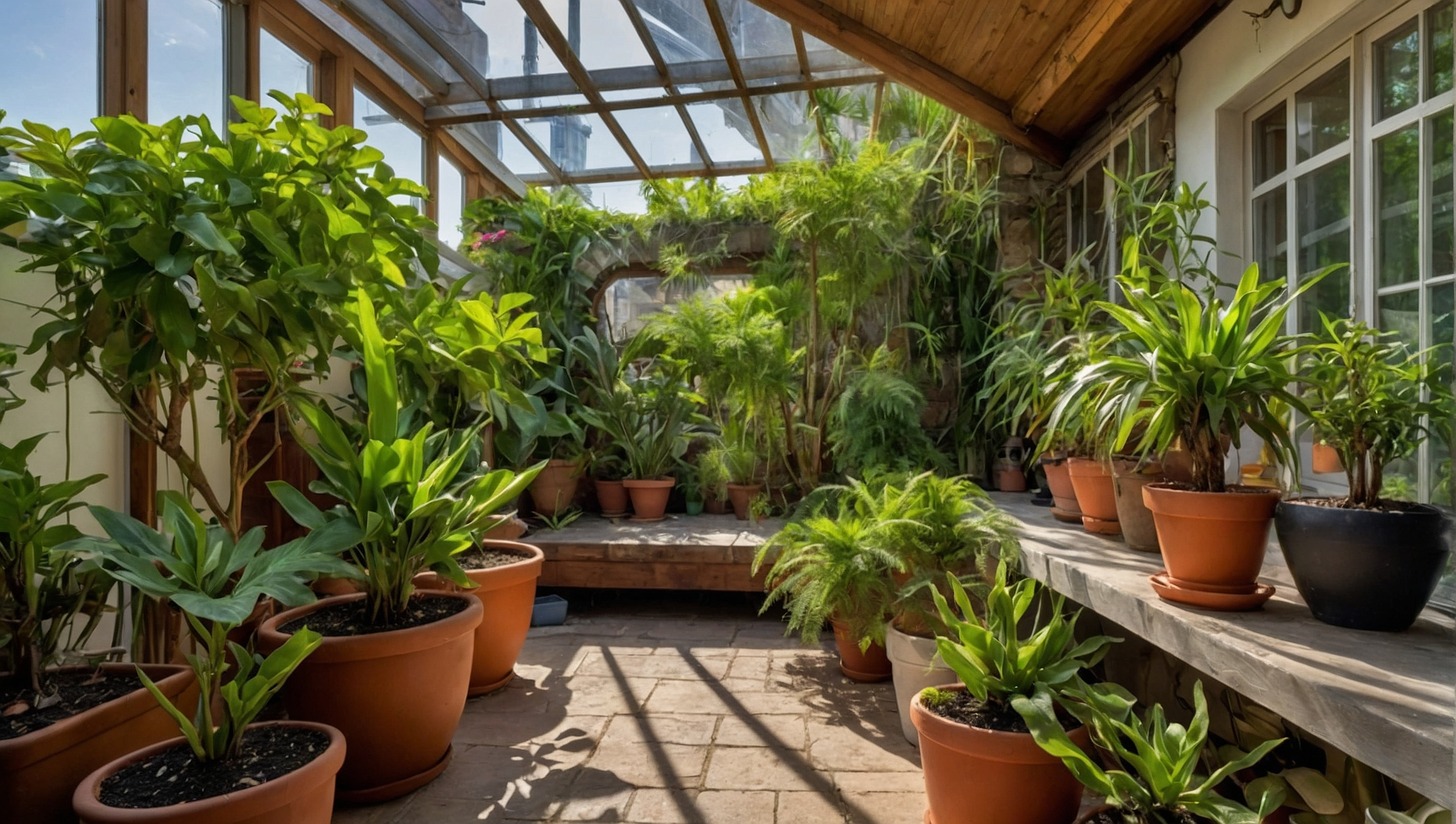Are you a proud plant parent living in an apartment? Do you want your leafy friends to look and feel their best, but find yourself overwhelmed by their unruly growth? Don’t worry, we’ve got you covered! Pruning is the secret to keeping apartment plants healthy and thriving. Not only does it help remove any dead or diseased parts, but it also allows you to maintain their shape and size. In this article, we’ll share expert tips on pruning apartment plants, so you can transform that jungle into a well-groomed oasis. Whether you’re a seasoned green thumb or a beginner, these practical tips will help you master the art of pruning and make your plants thrive in their cozy indoor environment. Say goodbye to messy and untamed plants, and get ready for a beautifully curated space that both you and your plants will love. Additionally, it’s essential to keep in mind that alongside pruning, maintaining cleanliness is vital for your plants’ overall health. Consider incorporating some cleaning tips for apartment plants into your routine, such as wiping down leaves to remove dust and allowing for better light absorption. With these practices, you’ll not only enhance the aesthetics of your indoor garden but also create a healthier environment for your leafy companions to flourish.
Benefits of Pruning your Indoor Greenery
Having indoor greenery can add a touch of nature and freshness to any space. However, as your plants grow, they may become overgrown and lose their desired shape. This is where pruning comes in. Pruning is the act of cutting back or removing certain parts of a plant to improve its overall health and appearance. By pruning your indoor greenery, you can keep them contained and prevent them from taking over your space.
One important technique in pruning is to prune back to a node. A node is where a leaf or a branch meets the main stem. By cutting back to a node, you encourage new growth to occur at that point, making the plant denser and more compact. This technique is particularly useful for plants that have become leggy or have uneven growth.
Another benefit of pruning your indoor greenery is that it helps maintain the shape and size of your plants. Over time, plants can grow in unexpected directions, resulting in a messy and unruly appearance. By regularly pruning, you can control the growth and keep your plants looking neat and well-maintained. This is especially important for plants with specific shapes or those that are trained to grow in a particular way.
Pruning your indoor greenery also promotes overall plant health. Overgrown plants can become crowded and create a humid microclimate, which can lead to increased pest and disease susceptibility. By pruning, you allow air circulation and light penetration, reducing the risk of such problems. Additionally, removing dead or damaged branches can prevent the spread of diseases and stimulate new, healthier growth.
In conclusion, pruning your indoor greenery offers numerous benefits. From maintaining shape and size to promoting overall plant health, it is an essential practice for any plant enthusiast. So, grab your pruning shears and give your indoor plants the care they deserve. You’ll be rewarded with healthier, more beautiful greenery to enjoy in your living space.
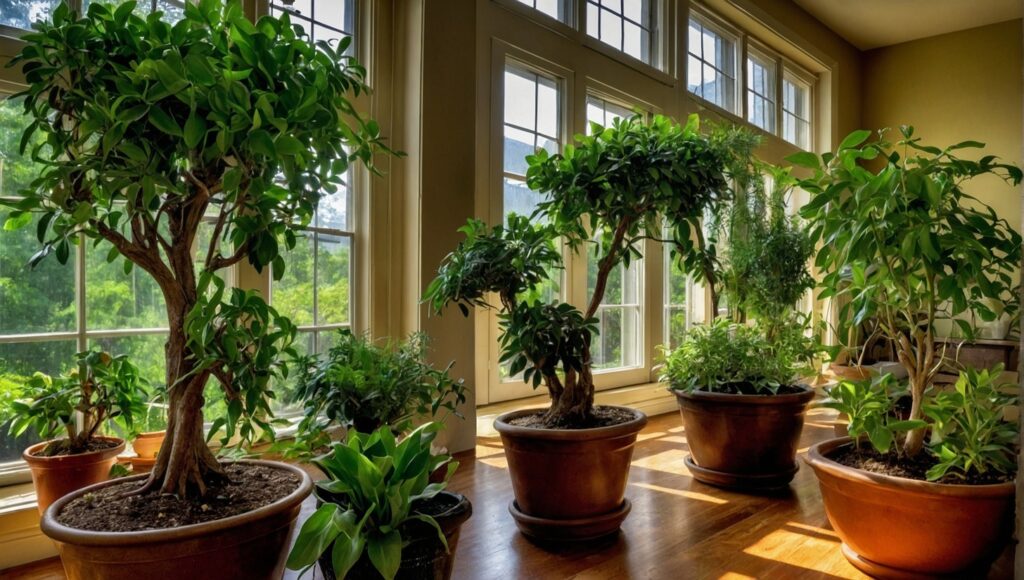
Tools You Need for Pruning Apartment Plants
When it comes to keeping your apartment plants looking their best, trimming and pruning are essential tasks. Not only do they help maintain the shape and size of your plants, but they also promote healthy growth. However, in order to effectively trim your plants, you’ll need a few essential tools.
First on the list is a pair of sharp pruning shears. These are ideal for cutting through thick stems and branches, allowing you to shape your plants with precision. Make sure to choose shears with a comfortable grip to avoid discomfort during longer pruning sessions.
Next, a pair of snips is a must-have tool for those smaller, intricate trimming jobs. Snips are perfect for precise cuts on delicate plants, enabling you to remove dead or diseased leaves effortlessly. Look for snips with a spring mechanism that will automatically open the blades after each cut, reducing strain on your hands.
Lastly, investing in a pair of pruning gloves is crucial for protecting your hands while pruning. These gloves provide a barrier between you and your plants, shielding you from thorns, prickles, and irritating plant sap. Opt for gloves with a snug fit and good flexibility to ensure easy maneuverability as you prune.
By arming yourself with these essential tools, you’ll be well-equipped to tackle all your apartment plant pruning needs. With regular trimming and maintenance, your plants will not only look beautiful, but they’ll thrive, improving the overall ambiance of your living space. So go ahead, grab your shears, snips, and gloves, and give your apartment plants the attention they deserve.
When is the Best Time to Prune Indoor Plants?
Pruning indoor plants is an essential part of maintaining their shape and size, and promoting healthy growth. But, have you ever wondered when is the best time to prune your beloved leafy companions? Well, the good news is that indoor plants can be pruned throughout the year, but there are a few guidelines to keep in mind.
Firstly, it’s important to remember that indoor plants may have different growth cycles compared to their outdoor counterparts. Many indoor plants tend to grow actively during the spring and summer months, so it’s generally advised to prune them during this time. Pruning in the active growth phase allows the plant to recover quickly and encourages new growth.
However, if your indoor plant is a flowering variety, timing becomes crucial. It’s best to prune these plants immediately after they finish flowering. For example, if you have a peace lily that has just stopped blooming, it’s ideal to prune any faded flowers and yellow leaves. This not only helps maintain the plant’s appearance but also redirects its energy towards producing new flowers.
In summary, the best time to prune indoor plants is during their active growth phase, which for many plants is during the spring and summer months. However, if your plant is a flowering variety, it’s recommended to prune after the flowering period. By following these simple guidelines, you can help your indoor plants thrive and maintain their attractive shape and size all year round.
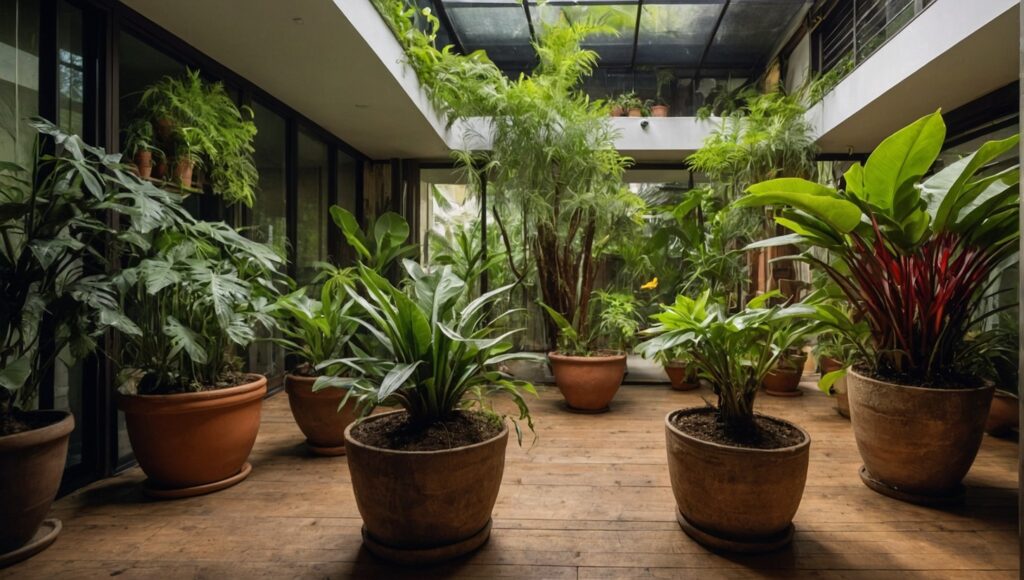
Step-by-Step Guide to Pruning Apartment Plants
Pruning is an essential task when it comes to maintaining the health and appearance of your apartment plants. Not only does it promote growth and vitality, but it also helps to prevent overcrowding and maintain the shape and size of your plants. However, pruning can be a daunting task if you’re unsure of where to start. That’s why we’ve put together this step-by-step guide to help you prune your apartment plants with ease.
First and foremost, ensure you have the right tools for the job. Sharp and clean pruning shears or scissors are a must. Blunt blades can cause damage to the plant and hinder its growth. Once you’re armed with the correct tools, examine your plants and identify any branches or leaves that are too big for their location or appear unhealthy. These are the areas that need to be pruned to maintain the overall balance of the plant.
When it’s time to prune, always remember to cut back to a node. A node is the point on the stem where new growth emerges. This is where you want to make your cut to encourage fresh growth. Follow the natural shape of the plant, cutting at a slight angle just above the node. Be sure not to cut too close or too far away, as this can hinder the plant’s ability to heal and regrow.
Once you’ve completed the pruning process, step back and assess the overall appearance of your plant. If you’re not satisfied with the shape or size, you can always make further cuts. Remember to regularly maintain and prune your apartment plants to promote healthy growth and prevent them from becoming unruly. With time and practice, you’ll become a pruning pro, and your plants will thank you for it.
Common Mistakes to Avoid When Pruning Indoor Greenery
Pruning indoor greenery is essential for maintaining shape and size, as well as promoting healthy growth. However, there are common mistakes that many people make when it comes to this delicate task. One of the most frequent errors is being too scissor-happy. While it may seem tempting to trim away any excess foliage, excessive pruning can actually harm the plant and hinder its development. It’s important to strike a balance between maintaining the desired shape and allowing the plant to thrive.
Another mistake to avoid is improper timing. Pruning at the wrong time of year can disrupt the natural growth cycle of the plant. Each type of indoor greenery has its own specific pruning requirements, so it’s crucial to research the specific needs of your plant. Generally, it’s best to prune during the plant’s dormant period or before the active growing season. This allows the plant to recover and redirect its energy towards healthy growth.
Additionally, neglecting the tools used for pruning can be a costly mistake. Dull and dirty scissors can cause damage to the plant and increase the risk of disease transmission. Always use sharp and clean pruning shears to ensure clean cuts and minimize the potential for infection. Regularly sanitizing your tools also helps prevent the spread of pests and diseases.
In conclusion, maintaining indoor greenery requires a cautious approach to pruning. Avoid the common mistakes of excessive pruning, improper timing, and neglecting tool maintenance. By following these guidelines, you can enjoy beautifully shaped and healthy plants that thrive in your indoor space.
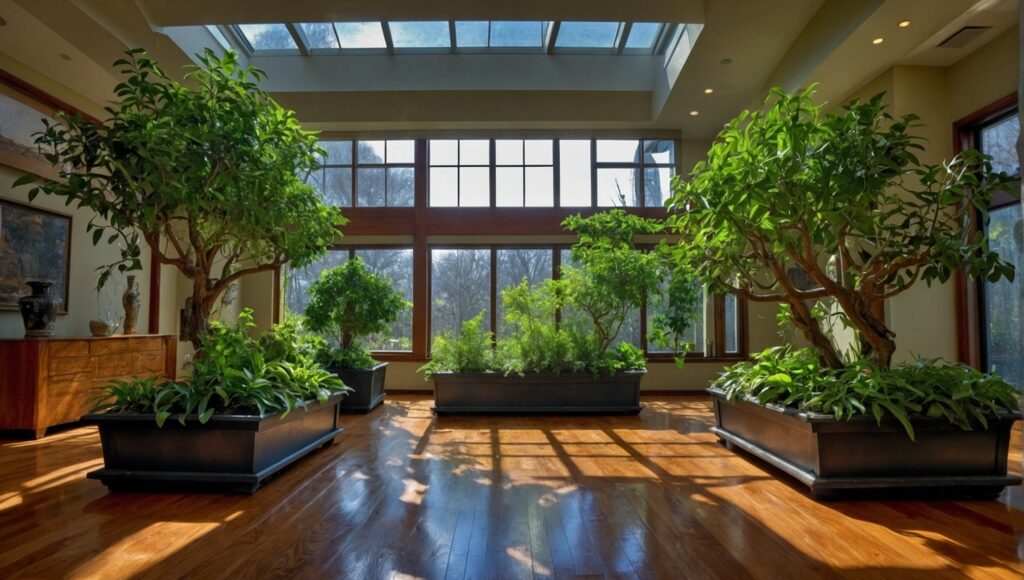
Pruning Techniques for Different Types of Apartment Plants
Pruning is an essential practice when it comes to maintaining the shape and size of apartment plants. However, it’s important to remember that not all plants require the same pruning techniques. Different types of apartment plants have varying growth patterns, which means they need specific care to thrive indoors.
For compact plants like succulents, it’s essential to remove dead or damaged leaves regularly. This not only helps the plant look more aesthetically pleasing but also prevents the spread of diseases. Additionally, cutting back any leggy growth encourages the plant to produce more compact and bushy foliage.
On the other hand, vine plants such as pothos or ivy require a different approach. These plants tend to grow rapidly and can quickly overwhelm a small apartment space. To keep them in check and maintain their size, regularly trim back any long tendrils or unruly growth. This will encourage lateral branching and create a fuller, more manageable plant.
For woody plants like bonsai trees or small shrubs, pruning helps maintain their desired shape and size. Regular trimming at specific points encourages new growth and maintains the plant’s overall aesthetic. However, it’s essential to research each plant’s specific pruning requirements to avoid damaging them.
In conclusion, pruning techniques vary depending on the type of apartment plant. Understanding the growth patterns of your plants is crucial in maintaining their shape and size. Whether it’s removing dead leaves, trimming back leggy growth, or shaping woody plants, regular and careful pruning will help your apartment plants thrive and beautify your living space.
How Pruning Promotes Growth and Health in Indoor Plants
Pruning is an essential practice that every indoor plant owner should adopt. Not only does it promote growth, but it also ensures the health and longevity of your beloved plants. When we talk about pruning, we refer to the process of selectively removing parts of a plant, such as branches, leaves, or buds. By doing so, we allow the plant to invest its energy into growing stronger, healthier, and more robust.
One of the main benefits of pruning is its ability to maintain the shape and size of indoor plants. As plants grow, they tend to become unwieldy, with branches sprawling in all directions. By pruning regularly, we can control the growth and direct it in a more desirable manner. Whether you want your plant to have a bushier appearance or a more compact form, pruning allows you to shape your indoor plants according to your preferences and available space.
Additionally, pruning plays a crucial role in the overall health of indoor plants. Trimming away dead or diseased parts prevents the spread of harmful pathogens, ensuring that your plants remain vibrant and disease-free. Pruning also allows for better airflow and sunlight penetration within the plant, reducing the risk of fungal diseases and promoting photosynthesis. Moreover, removing excess foliage can help prevent overcrowding and create a more open, airy environment for your plants to thrive.
It is important to note that different plants require different pruning techniques, so it is crucial to research the specific needs of your indoor plants. However, there are a few general principles to follow. Make sure to use clean, sharp pruning tools to minimize damage and infection. Always cut just above a node, as this is where the new growth will emerge. Lastly, don’t be afraid to prune your indoor plants regularly to maintain their shape and promote their growth and health.
Top Tips for Pruning Apartment Plants Like a Pro
Pruning apartment plants not only enhances their appearance but also promotes healthy growth. Whether you’re a seasoned plant enthusiast or a beginner, mastering the art of pruning can make a significant difference in how your plants thrive. To help you become a pro at pruning apartment plants, here are some top tips to maintain their shape and size.
First, it’s essential to identify which plants require pruning and when it should be done. Some plants, like succulents, rarely need pruning, while others, like vines or bushy plants, may require more frequent attention. Generally, it’s best to prune during the plants’ dormant period, which is typically in the late winter or early spring. However, if you notice any dead or damaged parts, it’s important to remove them promptly to prevent further harm to the plant.
When it comes to the actual pruning process, start by sterilizing your pruners or shears to avoid spreading any diseases or pests. As you prune, make sure to use clean, sharp tools to create precise cuts that promote new growth. Remember to trim only a small portion of the plant at a time. Removing large sections at once can shock the plant and hinder its ability to recover. Additionally, focus on removing any dead or diseased branches, as well as those that are crossing or rubbing against each other.
Lastly, remember to take a step back and observe your plant’s overall shape and size before making any cuts. Visualize how you want it to look and trim accordingly. Maintaining a balanced shape and size is not only aesthetically pleasing but also ensures that light and nutrients reach all parts of the plant. Regular pruning will not only keep your apartment plants looking their best but also encourage healthy growth, making your indoor greenery thrive like a pro.
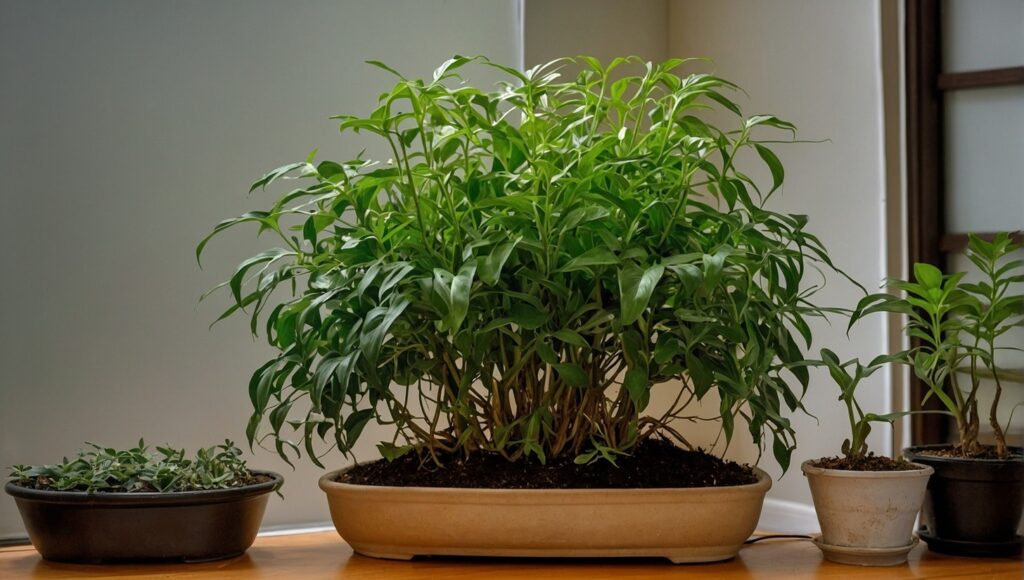
Pruning Schedule: How Often Should You Trim Indoor Greenery?
Indoor plants are a charming addition to any home or office space. Not only do they bring a touch of nature indoors, but they also provide several health benefits. However, one aspect of plant care that often gets overlooked is pruning. Regularly trimming your indoor greenery is essential to maintain their shape and size and keep them looking their best.
So how often should you prune your indoor plants? The answer varies depending on the type of plant you have. Some plants require frequent pruning, while others only need occasional trimming. As a general rule of thumb, you should inspect your plants every few weeks to see if they need attention. Look for any overgrown branches, wilting leaves, or signs of disease. These are indications that it’s time for a trim.
When it comes to maintaining the shape and size of your indoor plants, pruning is particularly crucial. If left unattended, certain plants can become leggy or bushy, losing their aesthetic appeal. By trimming back excessive growth, you can encourage fuller foliage and prevent your plants from becoming unruly. Regular pruning also allows for better airflow and light penetration, which is essential for a plant’s overall health.
Remember, each plant has its unique requirements, so it’s vital to familiarize yourself with the specific needs of your indoor greenery. Some plants, like succulents and cacti, require minimal pruning and can thrive with infrequent trims. On the other hand, fast-growing plants like pothos or spider plants may need more attention and could benefit from monthly pruning sessions. By understanding the care instructions for each plant, you can establish a suitable pruning schedule and ensure your indoor greenery stays healthy and beautiful year-round.
In conclusion, pruning is an essential aspect of indoor plant care. Regularly trimming your indoor greenery helps maintain their shape and size, ensuring they thrive and stay visually pleasing. While the frequency of pruning varies depending on the type of plant, checking your plants every few weeks is a good practice. By understanding the specific needs of each plant, you can establish a suitable pruning schedule that will keep your indoor greenery flourishing. So don’t forget to pick up your shears and give your plants the attention they deserve!
Troubleshooting: Dealing with Pruning Challenges in Apartment Plants
Apartment living comes with its fair share of challenges, especially when it comes to maintaining plants indoors. From limited space to inconsistent lighting conditions, apartment plants often require extra attention and care. One common challenge that many plant enthusiasts face is pruning. Pruning plays a crucial role in keeping plants healthy and well-maintained, but it can be more complex in the confined space of an apartment.
First and foremost, it’s important to understand the purpose of pruning. Pruning helps promote healthy growth by removing dead or diseased foliage, shaping the plant, and maintaining its size. However, in an apartment setting, there are a few additional factors to consider. The limited space available means that you need to be mindful of how much you prune. It’s crucial to strike a balance between maintaining the shape and size of the plant and allowing it enough foliage to thrive.
Another aspect to consider is the type of plants you have in your apartment. Different plants require different pruning techniques. For example, some plants grow in a bushy manner and need frequent pinching to maintain their shape. Others may require more radical pruning to control their size. Researching the specific needs of your plants will help you determine the appropriate pruning techniques to employ.
Additionally, it’s important to assess the lighting conditions in your apartment. Natural light is essential for plant growth, and the availability of sunlight will affect the rate of growth and the pruning needs of your plants. Make sure to place your plants near windows or invest in artificial grow lights to provide the necessary light required for healthy plant development.
Pruning can indeed present challenges when it comes to maintaining apartment plants. Nevertheless, with proper knowledge and care, you can overcome these challenges and create a thriving indoor garden. By understanding the purpose of pruning, adapting techniques according to the type of plants you have, and ensuring adequate lighting, you can keep your apartment plants healthy, well-maintained, and visually appealing.

